Physical Address
304 North Cardinal St.
Dorchester Center, MA 02124
Physical Address
304 North Cardinal St.
Dorchester Center, MA 02124
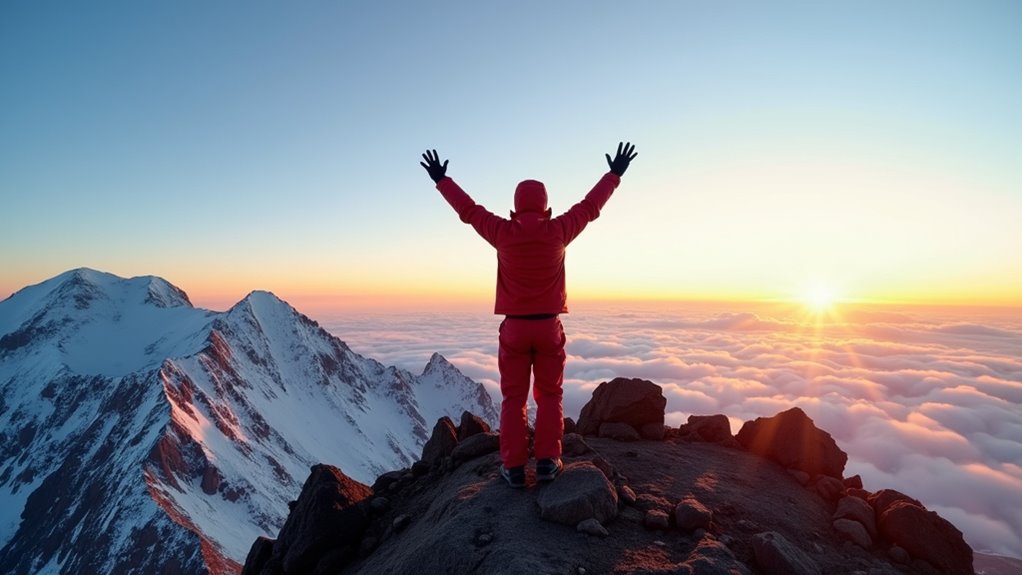
Discover the proven secrets to conquering Africa's highest peak, from essential gear to altitude strategies that boost your summit success.
You’re about to commence one of life’s greatest adventures: climbing Mount Kilimanjaro. As Africa’s highest peak at 19,341 feet, this dormant volcano isn’t just a mountain—it’s a test of your determination and preparation. While you don’t need technical climbing skills to reach the summit, you’ll need a smart strategy to join the 65% of climbers who make it to the top. Let’s explore how you can become one of the successful few who stand on the “Roof of Africa.”
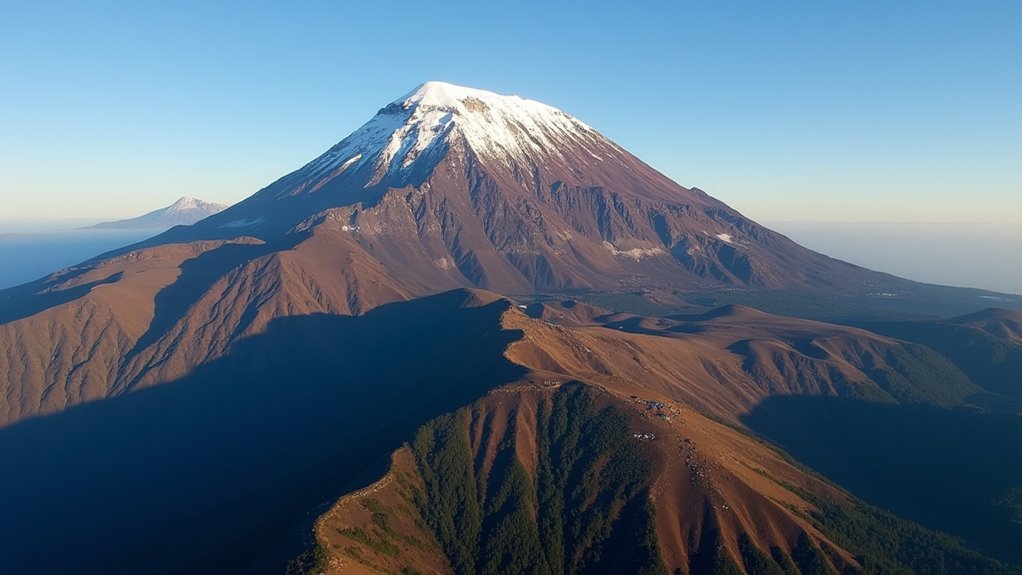
When planning your Kilimanjaro trek, choosing the right route can make the difference between success and failure. While there are seven established routes, you should focus on the ones that match your experience level and goals.
For beginners, consider the Lemosho route. It offers stunning panoramic views, lower crowds, and high summit success rates due to its gradual ascent over 7-8 days. The route takes you through varied ecosystems and terrain as you traverse from rainforest to alpine desert. Wilderness camping can provide a serene and rejuvenating experience on your Kilimanjaro trek.
If you’re up for a challenge, the popular Machame route delivers spectacular summit views in 6 days, though you’ll share the trail with more climbers.
For an easier climb with fewer crowds, the Rongai route is your best bet.
Avoid the Shira route if you’re concerned about altitude sickness, as its high starting point can be problematic for newcomers.
Selecting the right route sets you up for success, but your body and mind need to be ready for the challenge ahead. Start your training at least 8-16 weeks before your climb, focusing on both cardiovascular endurance and strength training. Practice on local hiking trails to simulate the actual climbing conditions.
You’ll need to build up to walking 6 miles nonstop at a 3 mph pace. Train 3-4 times weekly, combining aerobic exercises with strength workouts that target your legs and core. Include squats, lunges, and calf raises (3 sets of 10-12 reps), and gradually increase your workout intensity by 10% each week.
Don’t neglect mental preparation—it’s just as essential as physical fitness. Practice mindfulness and visualization techniques to prepare for the challenges ahead.
Break down your climb into manageable segments and use positive self-talk to maintain motivation during tough moments.
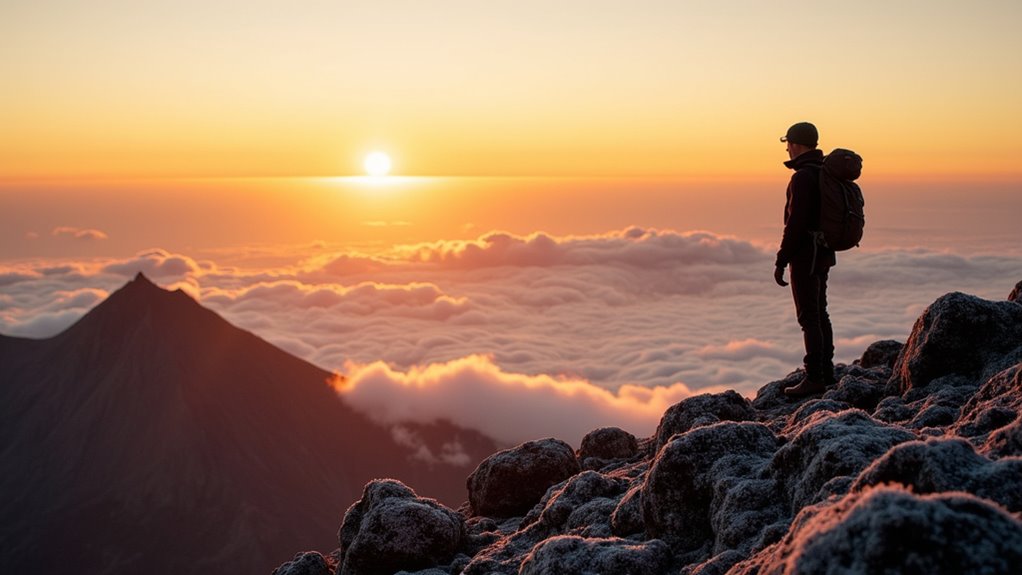
Three distinct seasons shape your Kilimanjaro climbing opportunities throughout the year.
You’ll find the best climbing windows during the dry seasons: June to September and December to early March. These periods offer clear skies, minimal precipitation, and more predictable weather patterns that boost your chances of reaching the summit.
Avoid the long rainy season from late March to May, when mudslides and slippery conditions make climbing dangerous. The short rainy season from October to December is also challenging, though less severe.
If you’re planning your climb, target June through September – you’ll experience cold mornings but clearer days. Each altitude zone presents different conditions, from the damp rainforest to the Arctic zone’s extreme cold, so pack accordingly. Temperatures at Uhuru Peak can plummet to minus twenty degrees Fahrenheit during nighttime summit attempts.
Proper preparation with the right gear can make or break your Kilimanjaro climb, regardless of when you choose to tackle the mountain.
Success on Kilimanjaro demands proper gear preparation – it’s the difference between reaching the summit and turning back early.
You’ll need to focus on four key gear categories: clothing, footwear, head protection, and essential accessories. Consider packing older warm clothing items as gifts for guides and porters. Camping on new sites can require additional planning and preparation.
Start with reliable layers – a waterproof jacket, insulated coat, and quick-dry shirts form your core clothing system.
Don’t skimp on footwear; well-broken-in mountaineering boots and quality hiking socks are vital.
Protect your head with both a sun hat and warm beanie, plus UV-rated sunglasses for intense glare.
Your daypack should carry at least 3 liters of water, and don’t forget trekking poles to save your knees.
For overnight comfort, invest in a sleeping bag rated for -10°C and an insulated pad.
Pack a headlamp with extra batteries – you’ll need it for summit night.
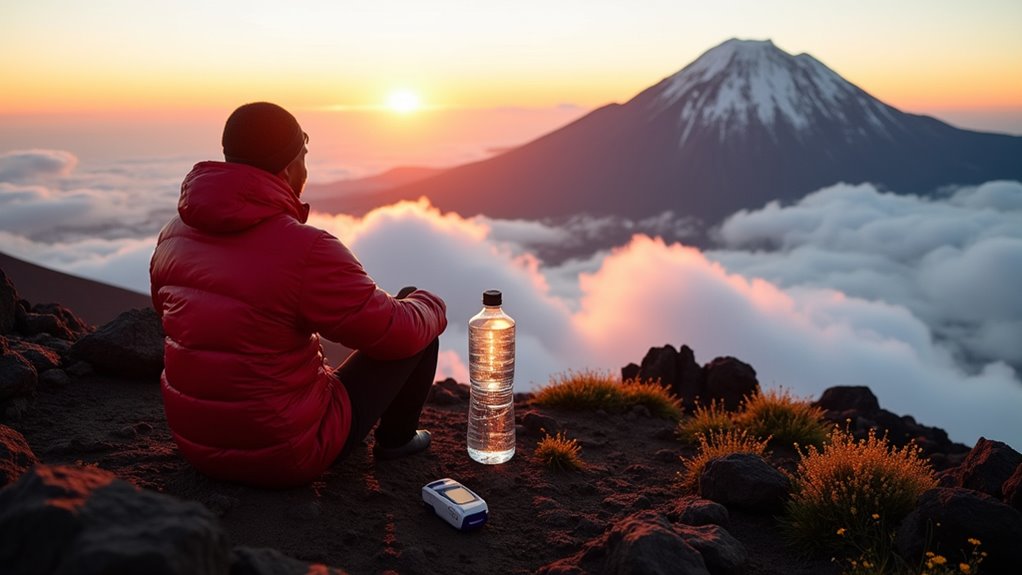
When climbing Kilimanjaro, managing altitude sickness can be the difference between reaching the summit and turning back early. At 19,340 feet, the peak has only half the oxygen found at sea level, making proper acclimatization vital for your success.
You’ll need to adopt the “walk high, sleep low” strategy, climbing to higher elevations during the day but descending to sleep. Keep your pace slow and steady, and drink plenty of water throughout your trek. Regular acclimatization allows your body to produce more red blood cells to help you adapt. Be aware of hunters while camping near the hiking trails.
Consider consulting your doctor about Diamox, a medication that can help prevent altitude sickness.
Watch for symptoms like headaches, nausea, and unusual fatigue. If you experience these, don’t push through – descend immediately.
Natural remedies like ginger can help with mild symptoms, but the most effective treatment is always descending to a lower altitude.
Safety on Kilimanjaro starts well before you set foot on the mountain.
You’ll need to get medical clearance, required vaccinations, and thorough travel insurance that covers high-altitude emergencies. Don’t skip your pre-climb fitness training – it’s essential for your success and safety. A proper training regimen should focus on cardiovascular endurance and leg strength.
Choose a reputable tour operator with certified Wilderness First Responder guides who can monitor your health daily using pulse oximeters and the Lake Louise Scoring System. Navigating the Risks of Adventure Camping can provide valuable insights into the potential dangers you may encounter.
Your guides should carry essential safety equipment, including first aid kits, portable oxygen, and reliable communication devices. Make sure they’re experienced in recognizing altitude sickness symptoms and have clear evacuation protocols.
If you’re considering Diamox for altitude acclimatization, discuss this with your doctor beforehand.
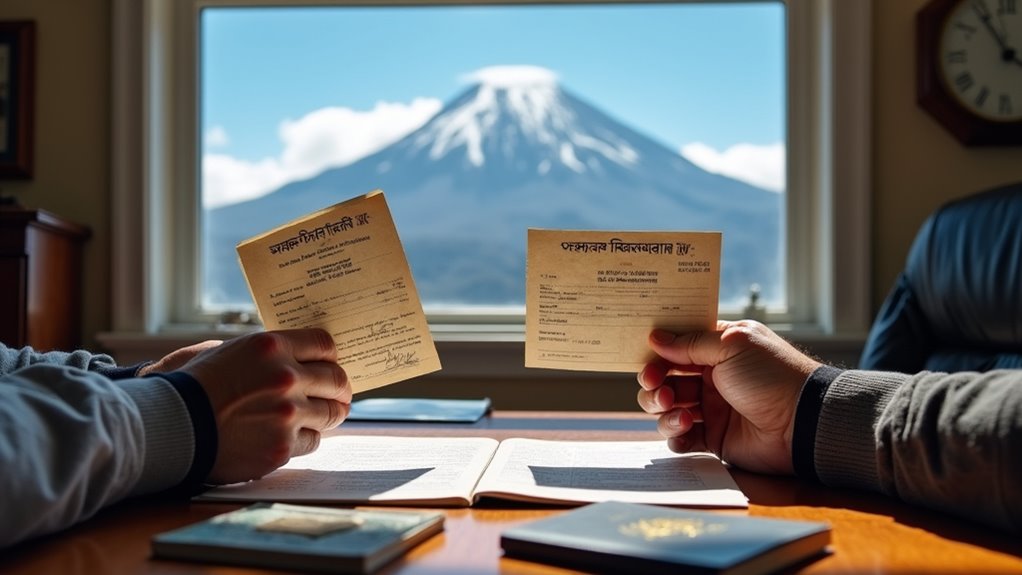
Booking a Kilimanjaro expedition requires careful planning at least 6-9 months before your intended climb date.
You’ll need to secure permits through a licensed tour operator, who’ll handle the paperwork with the Tanzanian National Parks Authority. When choosing your operator, focus on their reputation, experience, and the services they include in their package. With over 10 years of expertise in guiding climbers up the mountain, reputable operators ensure you’re in good hands.
Remember to factor in additional costs like travel insurance and any gear you’ll need to purchase.
Most operators accept wire transfers or credit cards, though credit card payments may incur extra fees.
Standing atop Kilimanjaro feels like floating on Africa’s highest cloud. You’ve trained hard, packed smart, and chosen your route wisely. With proper preparation and a reliable guide, you’ll conquer this majestic peak without breaking the bank. Remember, it’s not just about reaching the summit – it’s about respecting the mountain, listening to your body, and taking each step with purpose. You’ve got this.